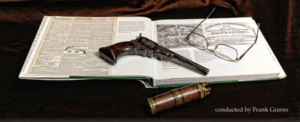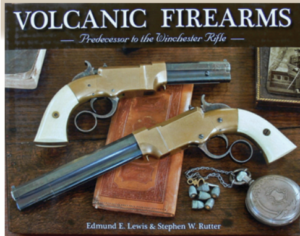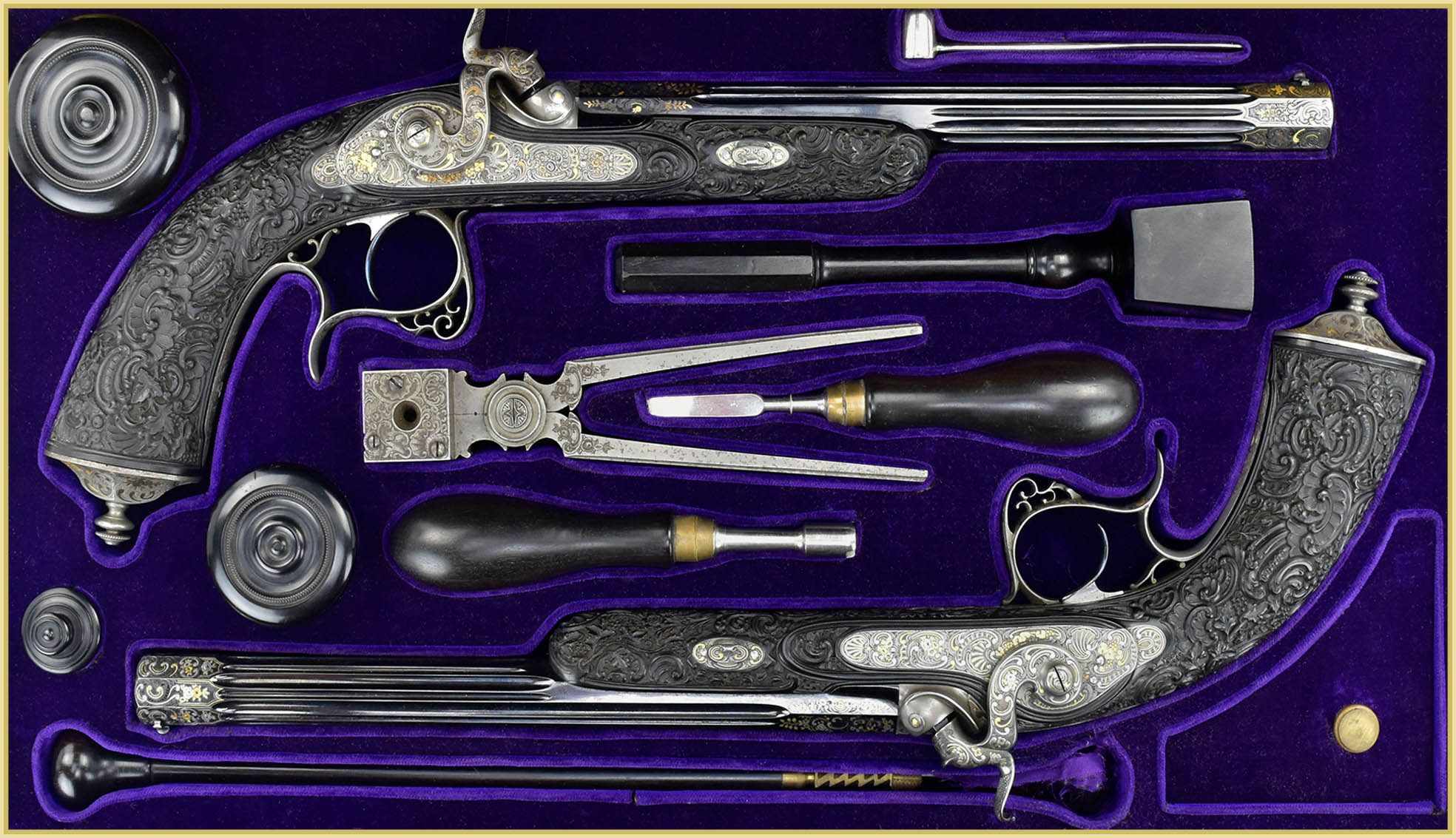Great Knife Makers for the Early West and More
Conducted by Frank Graves
In addition to reviewing recently issued books, we also take a retro look at some of the old classics from time to time. Although most are out of print, copies are not hard to find at gun shows. Today’s review is of Great Knife Makers for the Early West, by James D. Gordon. Jim Gordon has done it again! Following his gorgeous three-volume set on western firearms, this spectacular presentation of cutlery will establish a new definition for the visual study of edged weapons. The logical arrangement of the text covers Spanish belduque, scalpers, butchers, cartouches, and skinners. There are sections on the big, impressive fighting knives: dags, Bowies, dadleys, and the buffalo or chef’s knife. Then the book illustrates a variety of work by noted English cutlers such as Wilson, Furniss, Cutler, Jukes Colson, and Sorby.

Next to the arms themselves, books are the best investment a collector can make. During the “golden age” of collecting in the 1930s and 40s, when great finds could still be made, the adage “buy a book for every gun” was coined. At the time, only a small fraction of today’s books were available. Today’s offerings, plus the internet, allow us all to become experts in our areas of interest. Rodgers. The final section covers the most noted American makers like Russell, Lamson & Goodnow, Landers, Frary & Clark, Northampton, and Ames. There is an added feature of other marked knives, such as PCJ for Pierre Chouteau Jr. & Co., and Child & Pratt. Several rifle makers also made impressive cutlery, and examples by Meyer Fiede, Horace Dimick, George Tryon, Stephen O’Dell, Morgan Rood, and Franz Lunsmann are presented. These are undoubtedly among the rarest of Western Bowies. A number of period sheaths appear throughout the book.
It’s simply difficult to come up with enough superlatives to describe the material the work contains. My personal favorite is the personal “Indian Fighter” Bowie knife that belonged to William T. “Bill” Hamilton, whose life of adventure was detailed in his book, My Sixty Years on the Plains.
We highly recommend Great Knife Makers as a worthy addition to any library. Gordon owns the largest extant collection of J. Russell cutlery and memorabilia, including signs, factory photographs, boxes, and the like, and most of it is illustrated here. Many period illustrations from periodicals and books are also included, and several pages of original cutlery factory patterns appear. The photography is simply outstanding, the text is concise and succinct, Ron Kil’s artwork is bold and exciting, the format is impressive, and it’s out in time to be added to the shopping list for that special someone’s Christmas gift. —JAH.
Guest Reviewer: James Hanson, Ph.D., Museum of the Fur Trade
Authors Lewis and Rutter have done an outstanding amount of research into the history of the Volcanic Firearms, whose principles were the impetus to the very successful Winchester Lever Action rifles. There has been but one serious work on the topic, some years ago by R. Bruce McDowell in Evolution of the Winchester, which dealt with the backgrounds of factories and patents, but didn’t explore the variations and sub-variations that these authors have, which will reinforce the collectability of the Volcanic.
This book will show that to get a complete collection requires more variations than was previously thought by many collectors. It is amazing that the significance of the Volcanic has not really been recognized until now to justify a book such as this. The book contains fascinating details of the trials (and tribulations) of the people involved with the development of the Volcanics and later Henrys and Winchesters. The intricate involvements of some of the biggest names in early firearms are detailed here. The reader new to the subject will see familiar names such as Daniel B. Wesson and Horace Smith of later Smith & Wesson fame, as well as B. Tyler Henry and Oliver Winchester, all as major names related to the Henry, Winchester Repeating Arms Company, and Smith & Wesson. Many will be enlightened as to the substantial relationships that these companies had with each other.
The book goes through the pre-Volcanic arms, such as the Hunt Volition Repeater, the Jennings.
The book goes through the pre-Volcanic arms such as the Hunt Volition Repeater, the Jennings, and the Smith-Jennings, which were relatively crude predecessors yet very important in the development of the Volcanic firearms and the subsequent Henry and Winchester Repeating Rifles. There are interesting personal histories of the major players, along with wonderful vintage photographs of these figures, as well as various people pictured with their Volcanic pistols. Within all of the very high-resolution color pictures, one will see some examples of some of the best and rarest pistols and rifles, some being pictured for the first time.
There is a chapter on Volcanic Ammunition that is extremely interesting, as they represent the first self-contained cartridges that were mass-produced. These relatively large balls, hollowed out to contain a small powder charge as well as the primer, may have lacked power, but the overall lever system in firearms using these cartridges was the immediate step in front of the lever-action rifles using conventional cartridges as we know them today, some 160 years later. The reader will see that the early cartridge makers included Ralph Crittenden and William Tibbals, who would go on to produce cartridges and cartridge packs for Samuel Colt and others. Shown are many examples of the rare boxes that contained the cartridges.
The separation and differences between the New Haven Arms Company and the Volcanic Repeating Arms Company are explored, showing the crossover between the products of the two companies. Each of these is carefully detailed, and production variations are discussed in easy-to-understand detail, again with very good colored illustrations. Presentation arms, of which there are few, are pictured and discussed, as well as examples of casings and boxes. Although the Volcanics weren’t suitable for government contracts, they were often carried by soldiers before and during the Civil War. There are several examples shown that can be proven to have been used by various military figures. There are many examples of broadsides and advertising that this reviewer has never seen before in one place.

Finally, to button it all up, the final chapter discusses the Henry and Winchester rifle, where Oliver Winchester, after much investment lost with the previous companies, went on to great success with the Winchester Repeating Rifle Company.
Just about all of the 340+ photographs are in color, and the book is bound nicely on heavy-quality paper. Anyone interested in collecting firearms will find the information in this book to be indispensable.

